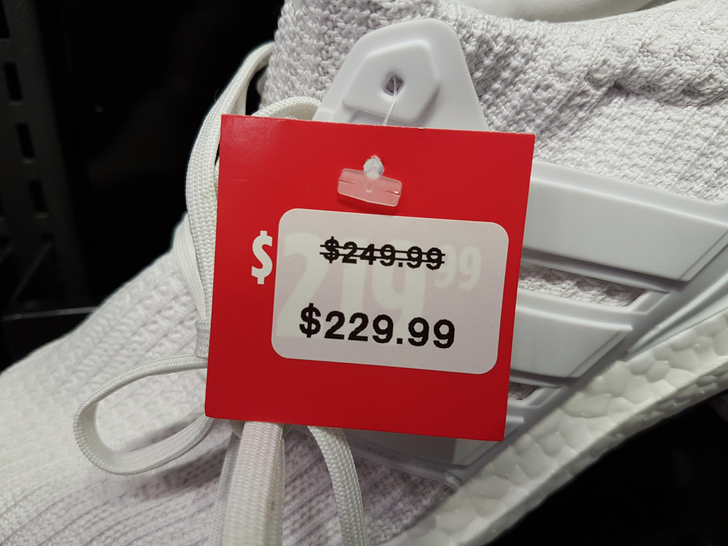How to Not Fall for Sneaky Marketing Tricks While You’re Shopping
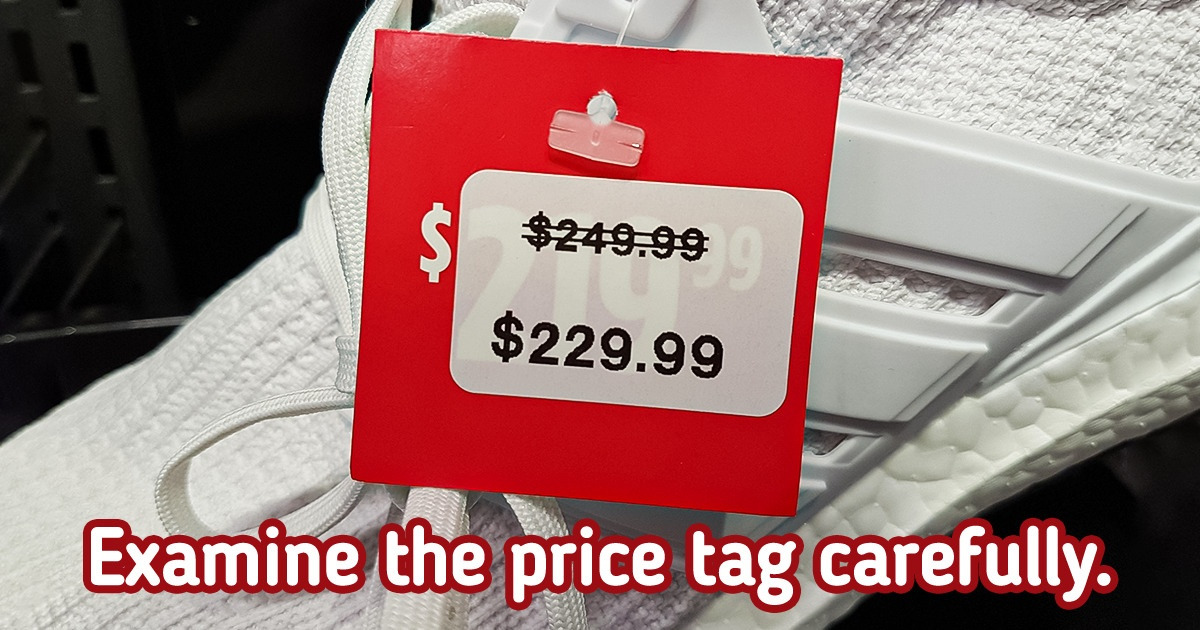
In order not to fall for the bait of marketers, you should know their tricks. Scarcity, the lighting, and even carts — all work in a way to make us spend as much money in the store as possible.
At 5-Minute Crafts, we hope that this article will help you get rid of the problem of impulse buying.
Scarcity
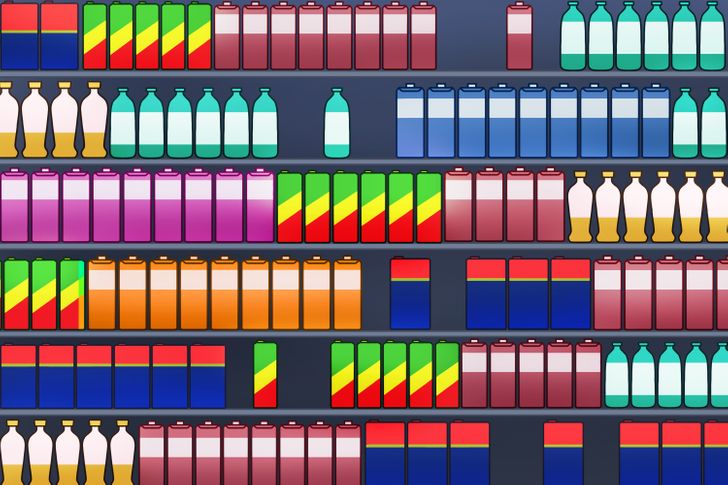
If we see that some goods are in short supply, we want to buy them. One of the most famous studies of scarcity was conducted by Stephen Worchel in 1975. The participants were offered cookies in 2 jars. The first jar had 10 cookies and the other had 2. People preferred the cookies from the second jar, even though the cookies in both jars were the same.
So if you see that there are fewer items on the shelf than similar items from a different manufacturer, perhaps this is just a marketing trick.
Cross-selling
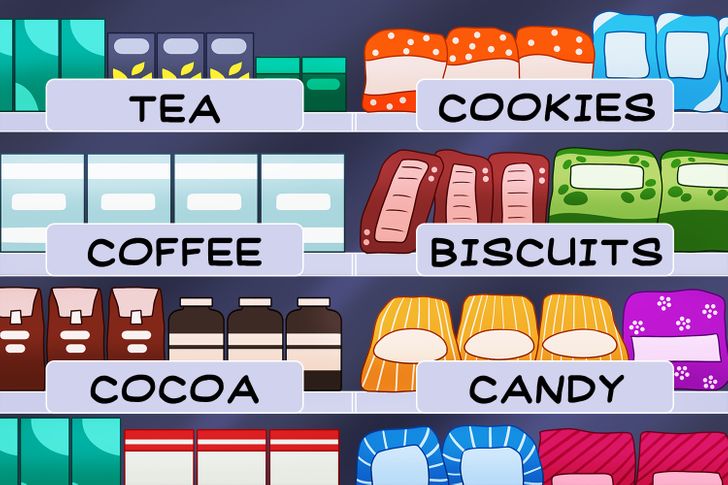
You may have noticed that in hypermarkets, related goods like coffee and pastries, snacks and drinks, baby clothes and food for children, are often located next to each other on the shelves. This method of product placement is called cross-selling.
This method is used to make sure that you buy something else when you come to the store for a specific item. This rule not only works in supermarkets, but also in electronics stores: when you purchase a phone, you may also be offered a case, a protective film, and other accessories.
Lighting matters
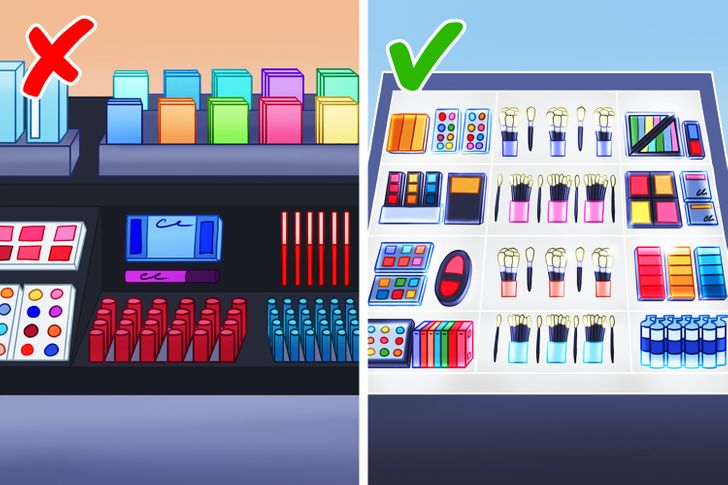
The right lighting has a positive effect on our mood, so we want to stay in the store longer and shop more. The eye is naturally attracted to contrasting areas rather than brightly lit ones, and blue light attracts more than any other color. However, we’ll stay longer in a place with warm lighting. A 2006 study conducted by the University of Winnipeg found that people usually make a purchase decision within the first 90 seconds, and 62 to 90% of that decision is based on color.
Changing the layout
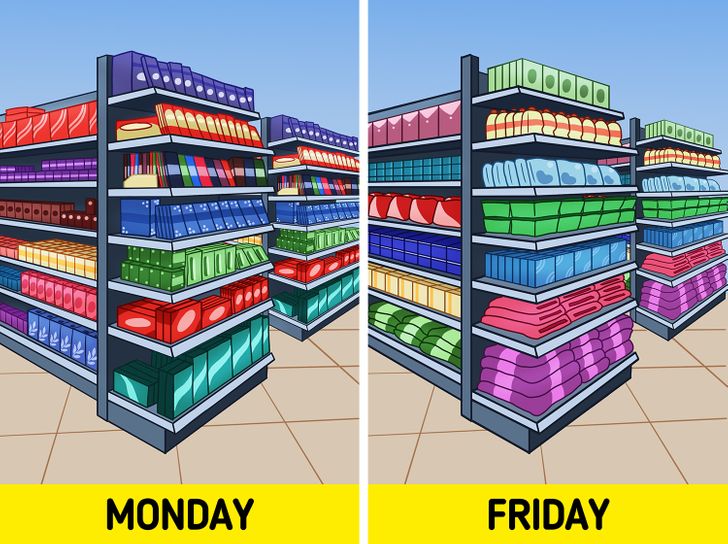
Have you noticed that big stores often change their layouts? This is done to force the customers to change their familiar route in the store, like “eggs — milk — bread.” Because the store employees rearrange the goods, we involuntarily see the rest of the store’s assortment.
Eye-catching signs on big displays in the center of the store
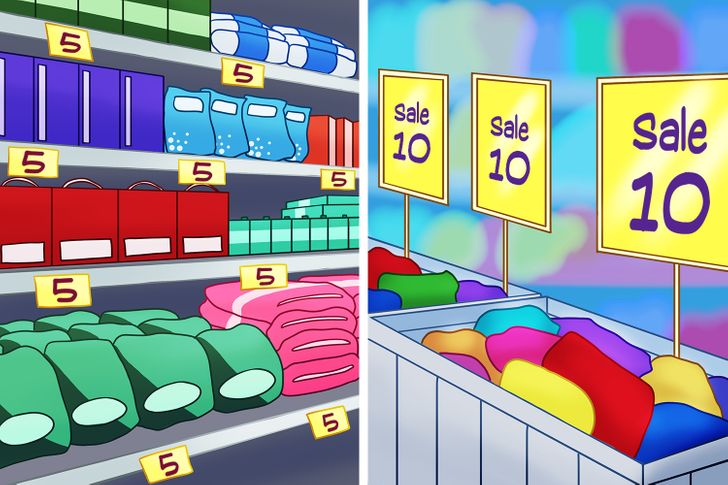
Big, eye-catching signs with the word “sale” on them usually attract our attention. These signs can be seen on the displays in the center of the store or right at the entrance, so that you definitely won’t miss them. These offers are not always the most profitable ones: the store may have goods in a similar quality at a lower price.
This trick is designed to make us think that this particular offer is the best. But at the same time, according to research conducted by the UK Consumer Association “Which?”, it turned out that most of these purchases saved little or no money at all.
Big shopping carts with red elements
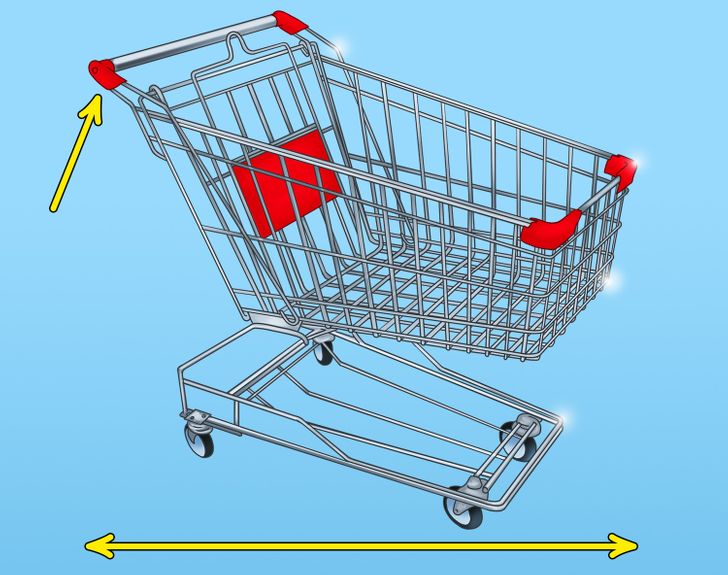
Supermarkets make their carts bigger and bigger triggering our unconscious urge to fill them entirely. Over the course of the experiment, it turned out that an increase in the size of the cart by 2 times led to the fact that the total amount of purchases increased by about 40%. So if your shopping list is small, it’s best to grab a hand-held basket.
As for bright red elements, according to marketers, they create an association with a sale, and increase the appetite and the likelihood of impulse purchases.
Expensive goods at eye level
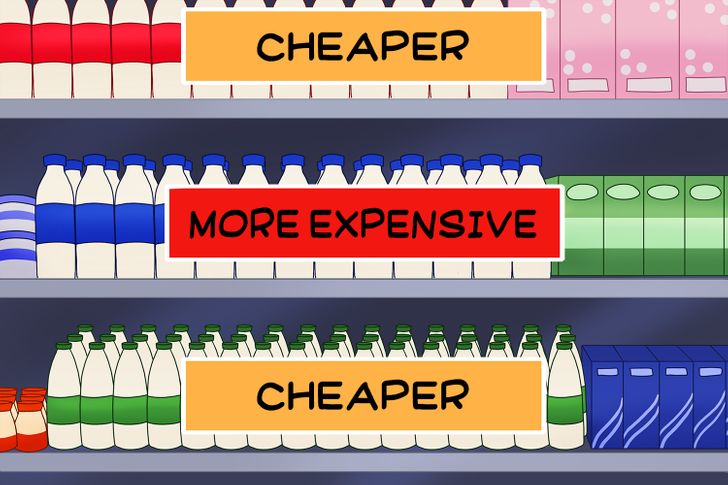
More expensive goods will always be at our eye level. Marketers do this not only because companies pay a lot of money for product placement there, but also because the store is interested in selling these products as soon as possible.
The cheapest products are often placed on the lower or upper shelves, as it’s not really convenient for customers to bend down or stand on their tiptoes. While bright cartoon packaging can probably be found on the lower shelves, attracting the attention of the children down there.
How to not fall for marketing tricks
- “This Black Friday sale didn’t do a good job of hiding their price increase.” © Nurrsha / Reddit
- Pay very close attention to the price tags so you won’t fall for a non-existent “sale.”
- Don’t shop on an empty stomach.
- Use a calculator.
- Examine all the shelves carefully.
- Use a small hand-held basket instead of a cart if your shopping list is small.
- Make a shopping list beforehand.
Have you or someone you know worked in retail? Feel free to share other lesser-known marketing tricks (and tips on how to avoid them) with us.
